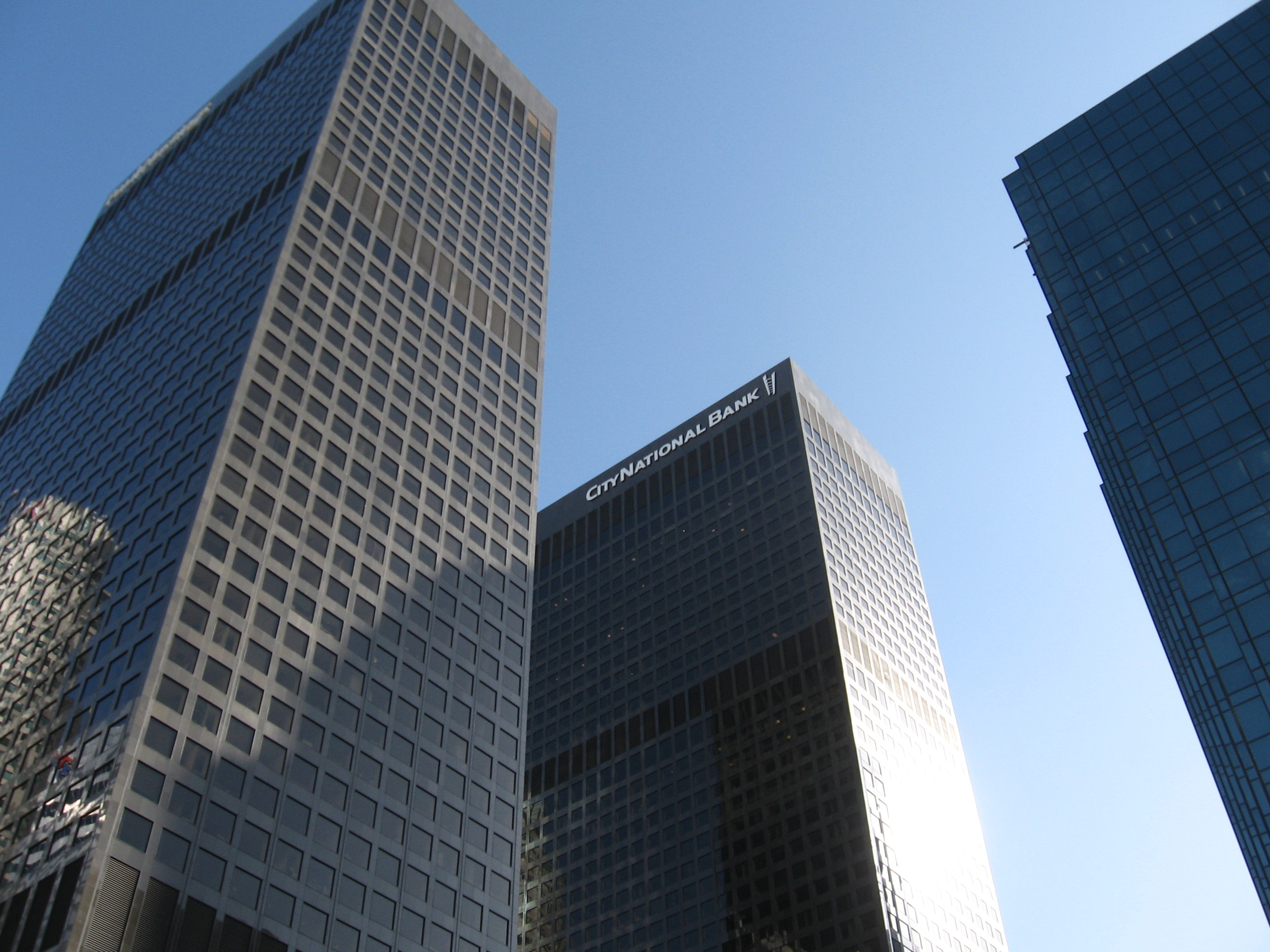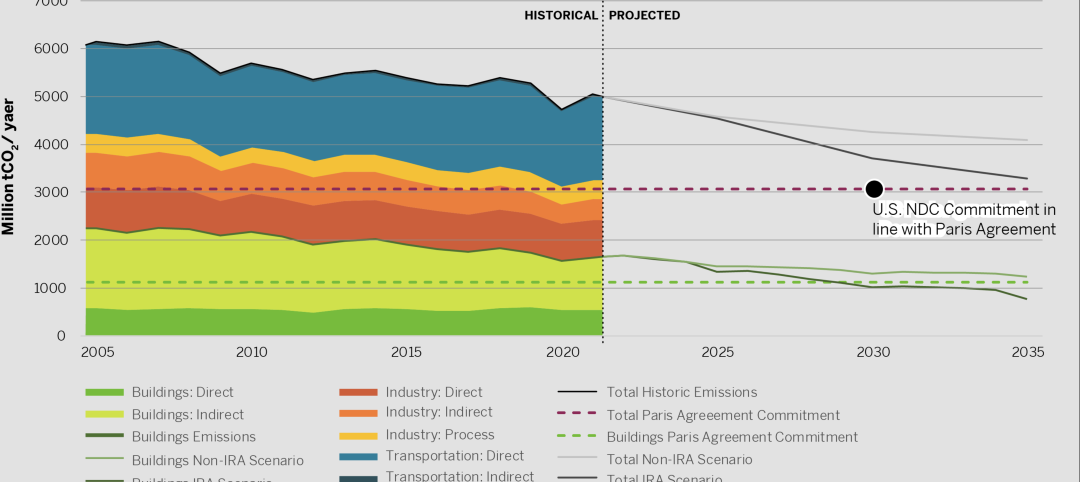Leading real estate companies are achieving incrementally significant reductions in their properties’ energy and water consumption and greenhouse gas emissions, according to the latest Greenprint Performance Report, released by the Urban Land Institute’s Greenprint Center For Building Performance.
This is the sixth annual report from the Greenprint Center, a worldwide alliance of real estate owners, investors, and strategic partners. Greenprint and its members are striving to reduce global greenhouse gas emissions by 50% by 2030. From 2009 through 2014, Greenprint’s membership grew by 140% to 36, and the properties being tracked increased by 768% to 5,224 buildings with 1.2 billion sf in 51 countries.
Over that five-year span, the energy consumption of members’ buildings fell by 11%, carbon emissions by 10.8%, the cost of energy by 4.5%, of electricity by 12.7%, and of water by 9%. Between 2013 and 2014 alone, members reported a 3.3% lowering in energy consumption to 11.8 billion kWh, a 2.7% reduction in greenhouse gas emissions to 4.3 million metric tons; a 2% decrease in electricity to 8.4 billion kWh; and a 1.9% reduction in water use to 54.5 million kiloliters (14.3 million gallons).
Greenprint notes that energy use and emissions reductions in the latest year tracked were equivalent to 277,856 barrels of oil not consumed, 25,153 cars taken off the road, 10,901 homes not consuming energy, 3,063,538 trees planted, or 58,211 metric tons of coal not burned.
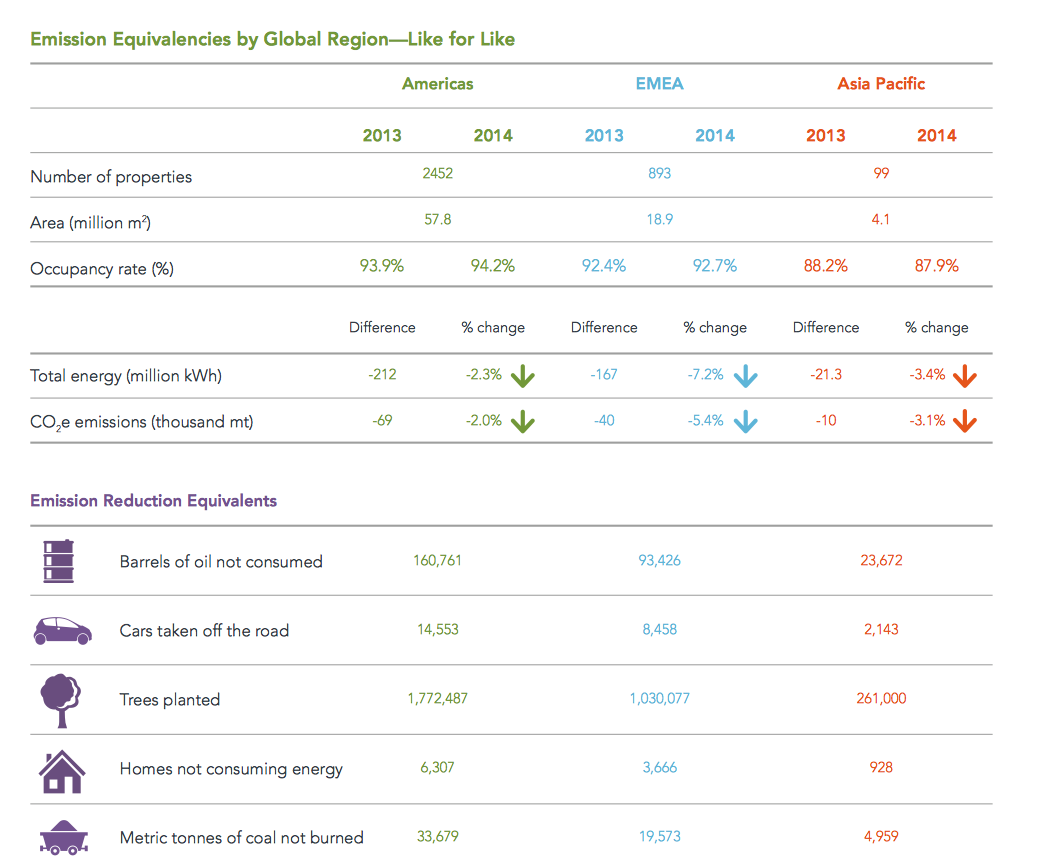
While these reductions are laudable, the report doesn’t sugarcoat the magnitude of the challenge lying ahead for a world—and by implication the real estate and AEC industries: Carbon dioxide in the air is at stratospheric levels globally. 2014 was the warmest year since temperatures were first measured in 1880.
As a result, “Sea level, as observed by satellites over the past 20-plus years, has risen by about 75 millimeters (2.95 inches), adversely affecting coastal cities, infrastructure, and the environment globally.”
The report notes, too, that more than half of the world’s population currently lives in urban areas, and that the built environmental produces up to 75% of greenhouse gas emissions in cities. And by 2025, over 1.8 billion people could be living in countries with “absolute water scarcity,” and two-thirds of the world’s population could be living under water-distressed conditions.
The report breaks down its members’ performance data geographically (The Americas, Europe/Middle East/Africa (EMEA), and Asia Pacific), and by industry sector: office (which accounted for 37% of total square footage tracked in 2013-2014), retail (14%), industrial (27%), multifamily (17%), and hotels (5%). The report includes performance data showing the extent that members’ buildings are lowering their waste and improving the biodiversity within their communities.
For each sector, the report offers prescriptive advice by way of case studies, some of which were effective without being all that expensive. The developer/builder AvalonBay replaced 3,575 toilets in 2,546 of its apartments in California, and saved 4.2 million gallons of water per year. In 2015, AvalonBay instituted a California water task force to bring water-efficient projects to scale and support residential engagement and education.

The Starwood W Retreat and Spa Maldives replaced its old air-conditioning system with efficient inverter-type AC units for staff accommodations and variable-refrigerant-flow units for guest villas and the spa. The resort installed heat-recovery fixtures that use generator waste heat to provide continuous hot water. It upgraded room lighting to LEDs and replaced 50 TVs with more efficient LED sets. It installed motion sensors to operate lights and exhaust fans. And it used power analyzer meters for each energy distribution area. Starwood’s total investment of $1,448,392 resulted in a 25% reduction in peak energy load, a 42% reduction in generator running hours (for the years 2011-2014), and $313,051 in diesel oil cost savings for the period 2013-2014.
Greenprint also singles out City National Plaza in Los Angeles, two 52-story office towers and one 40-story pavilion building. Its owner Commonwealth Partners took a holistic approach to upgrading the environmental performance of the property by making improvements to energy, water, indoor air quality and transportation. It now uses sustainable cleaning products for 98% of the building’s area. And it installed high performance filtration equipment and entry mats to mitigate environmental contaminants. The complex reduced its energy consumption by 38%, its water consumption by 40%, and is achieving annual savings of $4.3 million. The buildings’ proximity to mass transit allows an average of 600 passengers to be diverted to public transportation via natural gas fueled shuttles.
On the emissions front, the retrofit, by property manager Grosvenor, of an 811-sf multifamily building in London to Passivhaus EnerPhit standards—which included upgrading to more efficient ventilation, new triple-glazed mock sash windows, and improved insulation and airtightness—is expected to reduce tenants’ energy consumption by 80%, and to cut emissions by 840,000 kilograms—the equivalent of 1,900 barrels of oil not consumed—over the 60-year life of the property.
Bentall Kennedy, which manages two medical office buildings in San Antonio, consolidated quarterly HVAC maintenance under one vendor, retrofitted the building automation system with an interface that allowed better labeling and scheduling, and negotiated a new energy price contract. A $20,460 investment is projected to result in a 25% annual reduction in GHG emissions, and $558,384 in savings over 10 years.
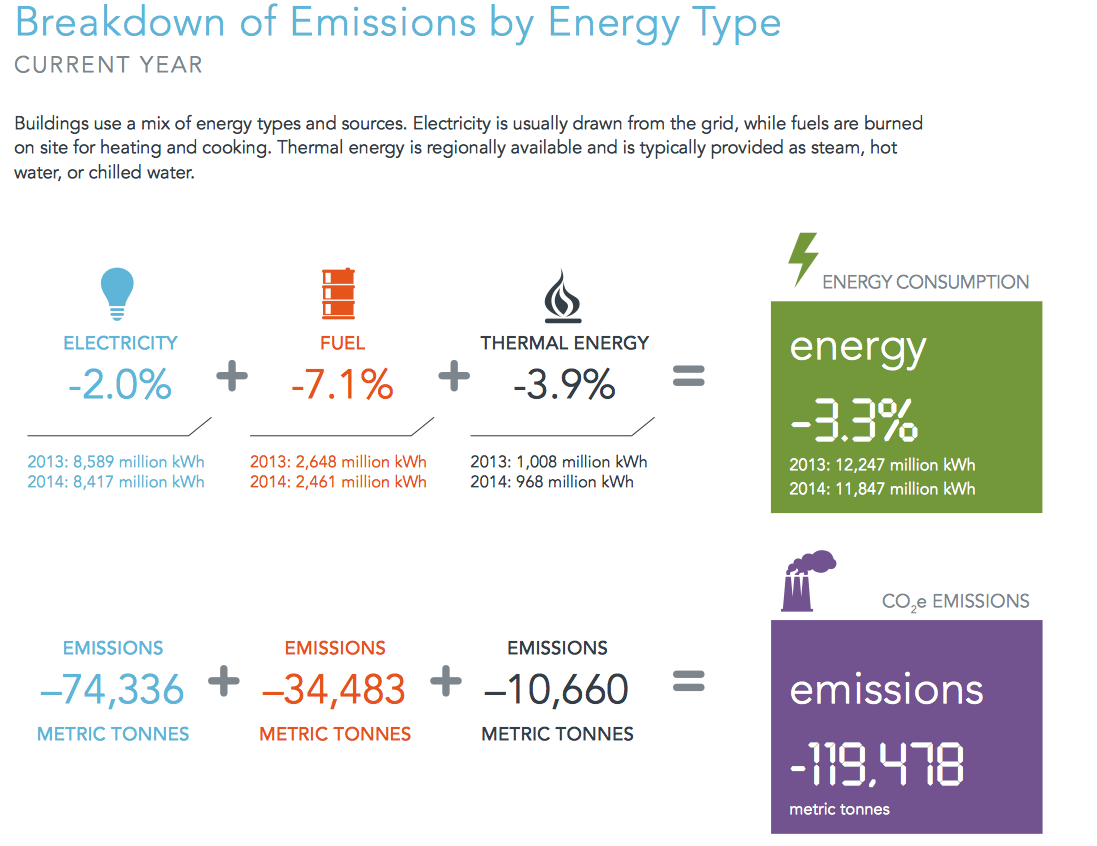

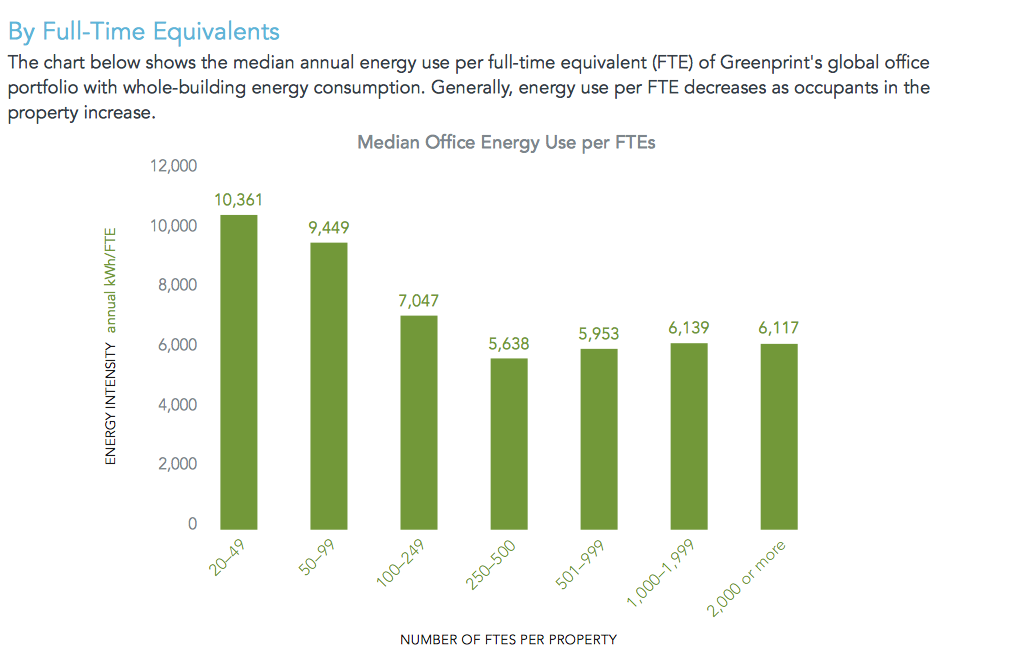
Related Stories
Green | Jan 8, 2024
DOE releases RFI on developing national definition for a Zero Emissions Building
The Department of Energy released a Request for Information (RFI) for feedback from industry, academia, research laboratories, government agencies, and other stakeholders on a draft national definition for a Zero Emissions Building.
Sustainability | Dec 22, 2023
WSP unveils scenario-planning online game
WSP has released a scenario-planning online game to help organizations achieve sustainable development goals while expanding awareness about climate change.
Green | Dec 18, 2023
Class B commercial properties gain more from LEED certification than Class A buildings
Class B office properties that are LEED certified command a greater relative benefit than LEED-certified Class A buildings, according to analysis from CBRE. The Class B LEED rent advantage over non-LEED is about three times larger than the premium earned by Class A LEED buildings.
Codes and Standards | Dec 18, 2023
ASHRAE releases guide on grid interactivity in the decarbonization process
A guide focusing on the critical role of grid interactivity in building decarbonization was recently published by ASHRAE. The Grid-Interactive Buildings for Decarbonization: Design and Operation Resource Guide provides information on maximizing carbon reduction through buildings’ interaction with the electric power grid.
75 Top Building Products | Dec 13, 2023
75 top building products for 2023
From a bladeless rooftop wind energy system, to a troffer light fixture with built-in continuous visible light disinfection, innovation is plentiful in Building Design+Construction's annual 75 Top Products report.
Codes and Standards | Dec 11, 2023
Washington state tries new approach to phase out fossil fuels in new construction
After pausing a heat pump mandate earlier this year after a federal court overturned Berkeley, Calif.’s ban on gas appliances in new buildings, Washington state enacted a new code provision that seems poised to achieve the same goal.
Green | Dec 11, 2023
U.S. has tools to meet commercial building sector decarbonization goals early
The U.S. has the tools to reduce commercial building-related emissions to reach target goals in 2029, earlier than what it committed to when it signed the Paris Agreement, according to a report by the U.S. Green Building Council.
Industry Research | Dec 9, 2023
Two new reports provide guidance for choosing healthier building products
The authors, Perkins&Will and the Healthy Building Network, home in on drywall, flooring, and insulation.The authors, Perkins&Will and the Healthy Building Network, home in on drywall, flooring, and insulation.
University Buildings | Dec 8, 2023
Yale University breaks ground on nation's largest Living Building student housing complex
A groundbreaking on Oct. 11 kicked off a project aiming to construct the largest Living Building Challenge-certified residence on a university campus. The Living Village, a 45,000 sf home for Yale University Divinity School graduate students, “will make an ecological statement about the need to build in harmony with the natural world while training students to become ‘apostles of the environment’,” according to Bruner/Cott, which is leading the design team that includes Höweler + Yoon Architecture and Andropogon Associates.
Industrial Facilities | Nov 14, 2023
Some AEC firms are plugging into EV charging market
Decentralized electrical distribution is broadening recharger installation to several building types.


